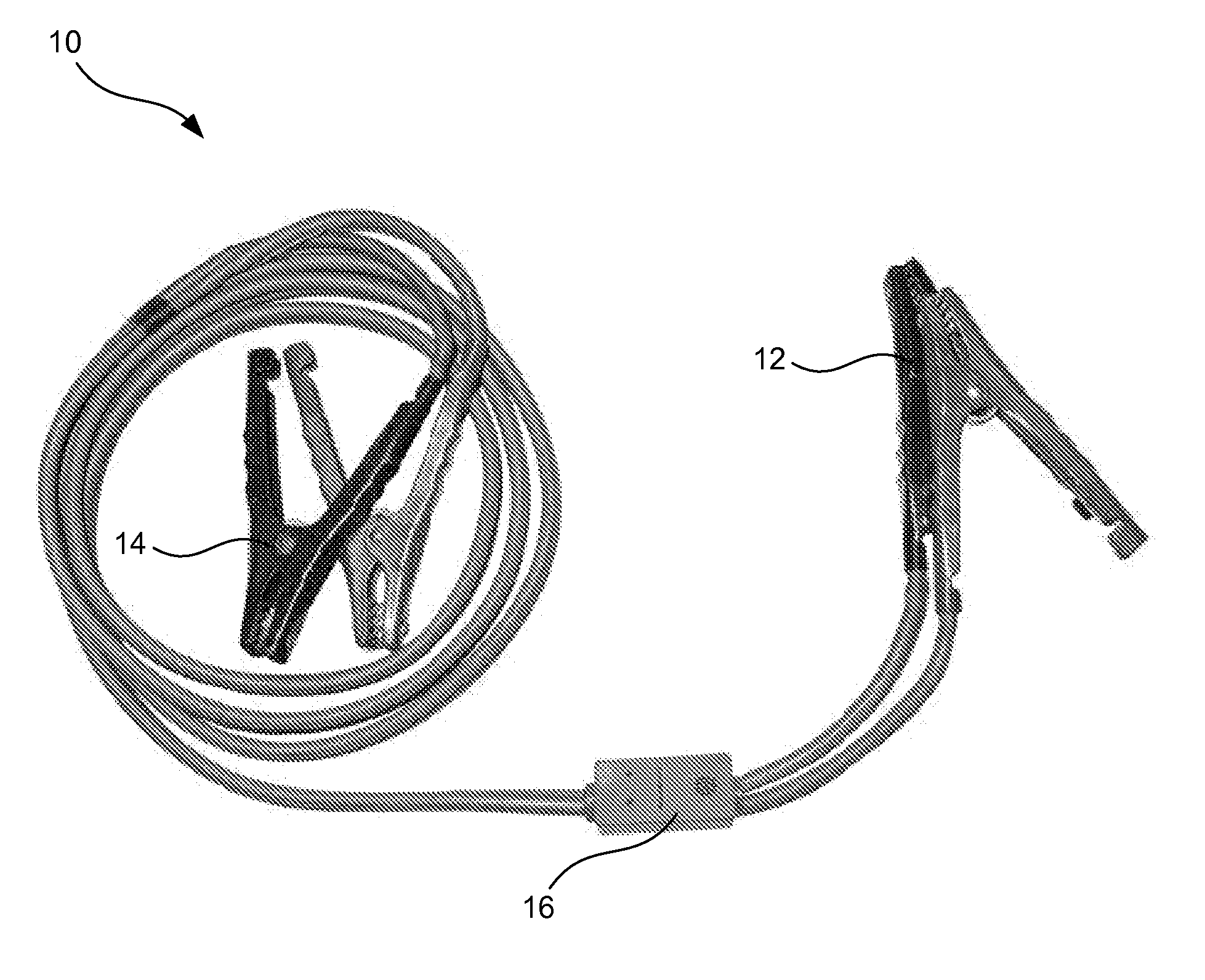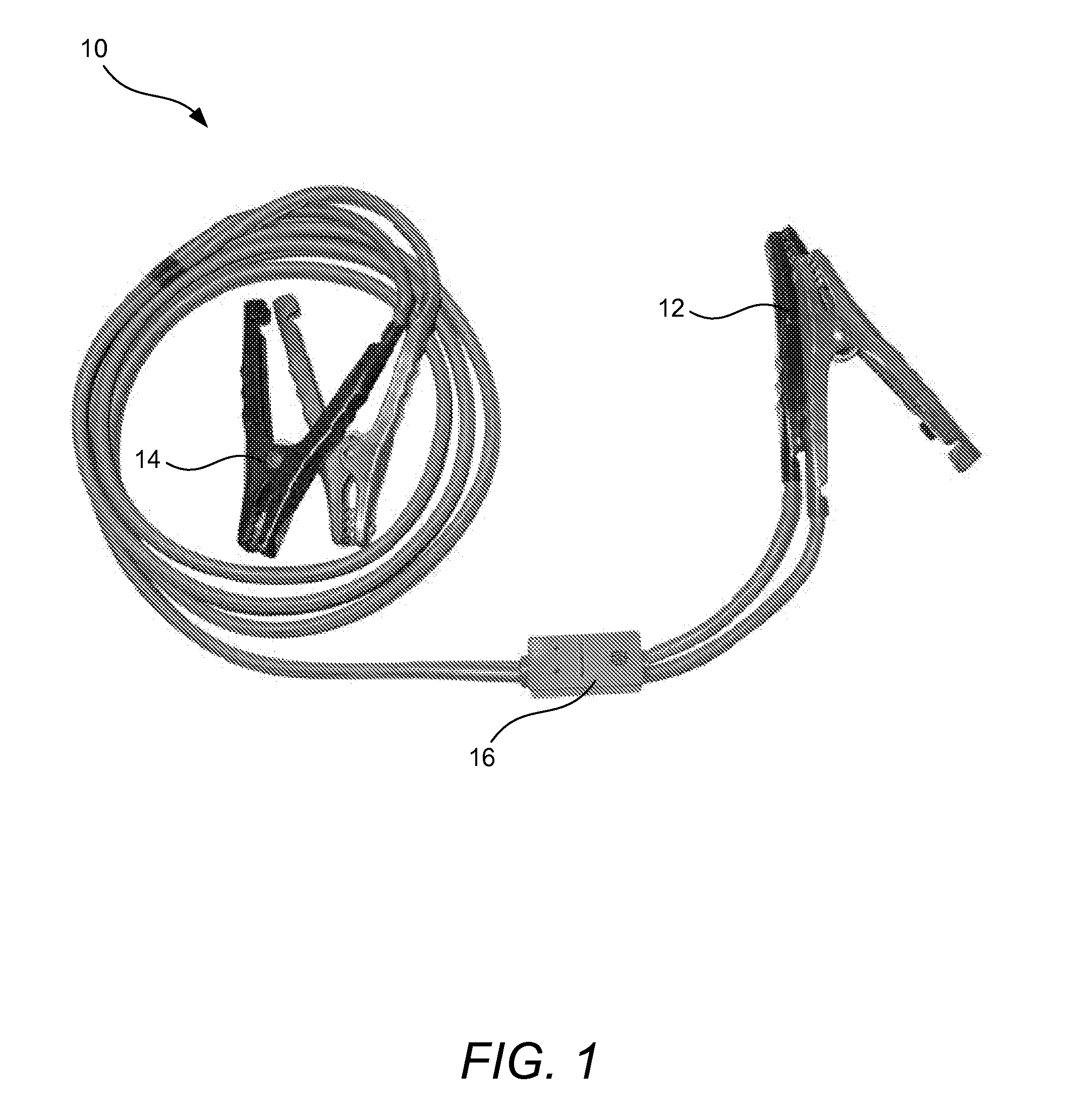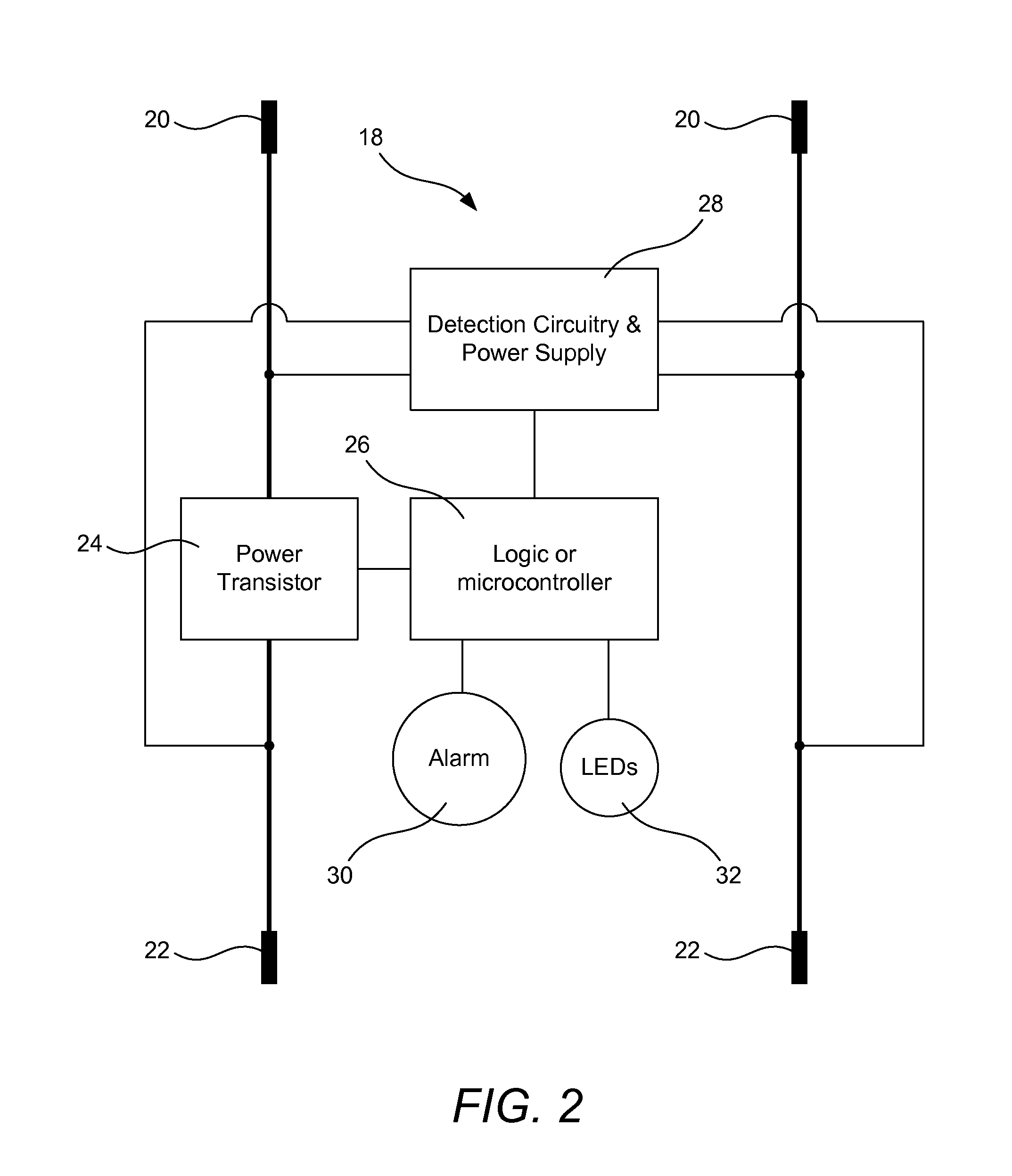Low-Voltage Connection with Safety Circuit and Method for Determining Proper Connection Polarity
a safety circuit and low-voltage connection technology, applied in the field of batteries, can solve the problems of increasing component cost, achieve the effects of improving connection safety and functionality, reducing or preventing inductive voltage spikes, and improving safety
- Summary
- Abstract
- Description
- Claims
- Application Information
AI Technical Summary
Benefits of technology
Problems solved by technology
Method used
Image
Examples
Embodiment Construction
[0024]A description of embodiments of the present invention will now be given with reference to the Figures. It is expected that the present invention may take many other forms and shapes, hence the following disclosure is intended to be illustrative and not limiting, and the scope of the invention should be determined by reference to the appended claims.
[0025]Embodiments of the invention provide a safety circuit for use in low-voltage systems that improves safety of and provides additional features to low-voltage connections. When incorporated into a battery, the circuit leaves the battery disconnected from the low-voltage system until it determines that it is safe to make a connection. When the safety circuit determines that no unsafe conditions exist and that it is safe to connect the battery, the safety circuit may connect the battery by way of a “soft start” that provides a connection over a period of time that reduces or prevents inductive voltage spikes on the low-voltage sys...
PUM
| Property | Measurement | Unit |
|---|---|---|
| voltage | aaaaa | aaaaa |
| time | aaaaa | aaaaa |
| voltage | aaaaa | aaaaa |
Abstract
Description
Claims
Application Information
 Login to View More
Login to View More - R&D
- Intellectual Property
- Life Sciences
- Materials
- Tech Scout
- Unparalleled Data Quality
- Higher Quality Content
- 60% Fewer Hallucinations
Browse by: Latest US Patents, China's latest patents, Technical Efficacy Thesaurus, Application Domain, Technology Topic, Popular Technical Reports.
© 2025 PatSnap. All rights reserved.Legal|Privacy policy|Modern Slavery Act Transparency Statement|Sitemap|About US| Contact US: help@patsnap.com



